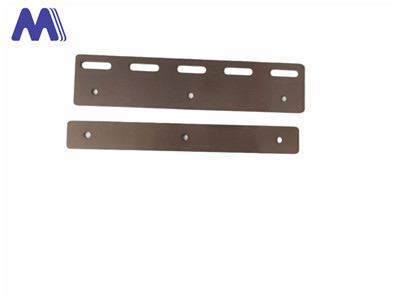- Afrikaans
- Albanian
- Amharic
- Arabic
- Armenian
- Azerbaijani
- Basque
- Belarusian
- Bengali
- Bosnian
- Bulgarian
- Catalan
- Cebuano
- Corsican
- Croatian
- Czech
- Danish
- Dutch
- English
- Esperanto
- Estonian
- Finnish
- French
- Frisian
- Galician
- Georgian
- German
- Greek
- Gujarati
- Haitian Creole
- hausa
- hawaiian
- Hebrew
- Hindi
- Miao
- Hungarian
- Icelandic
- igbo
- Indonesian
- irish
- Italian
- Japanese
- Javanese
- Kannada
- kazakh
- Khmer
- Rwandese
- Korean
- Kurdish
- Kyrgyz
- Lao
- Latin
- Latvian
- Lithuanian
- Luxembourgish
- Macedonian
- Malgashi
- Malay
- Malayalam
- Maltese
- Maori
- Marathi
- Mongolian
- Myanmar
- Nepali
- Norwegian
- Norwegian
- Occitan
- Pashto
- Persian
- Polish
- Portuguese
- Punjabi
- Romanian
- Russian
- Samoan
- Scottish Gaelic
- Serbian
- Sesotho
- Shona
- Sindhi
- Sinhala
- Slovak
- Slovenian
- Somali
- Spanish
- Sundanese
- Swahili
- Swedish
- Tagalog
- Tajik
- Tamil
- Tatar
- Telugu
- Thai
- Turkish
- Turkmen
- Ukrainian
- Urdu
- Uighur
- Uzbek
- Vietnamese
- Welsh
- Bantu
- Yiddish
- Yoruba
- Zulu
Innovative Design Elements of Modern Curtain Walls in Architecture
The Evolution and Importance of Curtain Walls in Modern Architecture
In the realm of modern architecture, the curtain wall has emerged as a defining feature that not only enhances aesthetic appeal but also serves functional purposes in building design. A curtain wall is a non-structural outer covering of a building that is typically made of lightweight materials such as glass, metal, and other composites. It is characterized by its ability to allow natural light to permeate the interiors while providing insulation and protection from the elements.
The history of curtain walls can be traced back to the early 20th century, with notable early examples found in skyscrapers where developers sought to maximize the floor space by minimizing the structural load of the façade. The Woolworth Building in New York City, completed in 1913, is often credited as one of the first buildings to use a curtain wall system effectively. This innovation paved the way for subsequent designs that embraced the glass-and-steel aesthetic that characterizes many contemporary urban landscapes.
One of the key advantages of curtain walls is their versatility in design. They can be engineered to accommodate various architectural styles, from sleek and modern to more traditional appearances. Designers often utilize steel and aluminum frames which allow for large expanses of uninterrupted glass, creating an open and airy environment. This not only improves the visual connection between the interior spaces and the external environment but also contributes to energy efficiency. The incorporation of energy-efficient glazing technologies helps reduce heat gain and loss, facilitating better thermal performance of the buildings.
Additionally, advancements in technology have led to the development of various curtain wall systems that cater to different environmental and structural requirements. For instance, ventilated curtain walls allow for natural ventilation, improving indoor air quality and reducing reliance on mechanical HVAC systems. Furthermore, the introduction of green curtain walls, which incorporate living plants as part of the façade, offers a sustainable approach to urban architecture. These systems not only enhance biodiversity but also contribute to insulation and energy savings.
curtain wall

Safety is another critical consideration in the design of curtain wall systems. Modern codes and standards have established guidelines to ensure that curtain walls can withstand various stresses, including wind pressure and seismic activity. The use of advanced materials and engineering practices has made curtain walls more resilient, ensuring that they protect occupants and property from potential hazards.
Another noteworthy aspect of curtain walls is their impact on urban aesthetics. Skyscrapers adorned with sleek, reflective surfaces can create striking skylines, transforming cityscapes and contributing to a city’s identity. The interplay of light and glass can change with the time of day, offering a dynamic visual experience. This quality not only enhances the architectural beauty of buildings but also plays a significant role in promoting a sense of place within urban settings.
However, with the advantages of curtain walls come challenges. The maintenance of expansive glass façades can be demanding, requiring regular cleaning and inspection to prevent accumulated dirt and damage. Moreover, while they offer excellent views and lighting, proper design considerations must be implemented to prevent excessive heat gain or loss, which could result in significant energy costs.
In conclusion, curtain walls represent a significant evolution in architectural design, offering a blend of aesthetic appeal and functional efficiency. As cities continue to grow and evolve, the integration of curtain walls into building designs will remain vital, transforming urban spaces while promoting sustainability and resilience. The future of architecture will undoubtedly see further innovations in curtain wall technology, ensuring that they continue to meet the demands of contemporary and future urban living.
-
Commercial Freezer Curtains Durable Vinyl, Energy-Efficient & InsulatedNewsMay.15,2025
-
Durable PVC-Streifen in Großrollen Bulk Orders & Custom SizesNewsMay.15,2025
-
PVC Vinyl Strip Curtains Durable, Clear Door Insulation SolutionsNewsMay.14,2025
-
Affordable Plastic & PVC Curtain Prices Durable & TransparentNewsMay.14,2025
-
PVC Strip Curtains for Food Industry Hygienic & Durable SolutionsNewsMay.14,2025
-
Plastic Door Curtain Manufacturers Magnetic & Welding SolutionsNewsMay.13,2025



